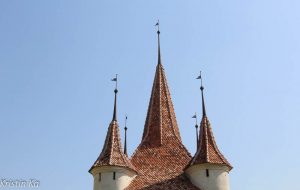It's always the same thing when I talk about a travel to Romania, I get a "but there's nothing to see there!" . (sighs) Well, yes there is!
Romania, pfff. To say that we’re going to visit Romania is sometimes almost indecent. It’s not uncommon to hear sighs full of “I expected better from you“. However, Romania is really nice country to travel. It is high time to visit this country and crush down its sad reputation and give it the honours it deserves.
Anyway, I am sometimes tempted to leave gullible people to their preconceived ideas: when they arrive in Romania with a head full of bias, prepared for the dreariness, the surprise is all the more beautiful.
Salut Romania! Numele meu este Christine, sunt franceză, drăguță să vă cunosc! Hi Romania!
Let’s be very clear about: 1- In Romania there are no vampires, 2- Romanians are not beggars, 3- Romania is beautiful. That’s it.
Meet the Romanians
Seeing Romania scrolling through the window is not a black and white film from the 1920s.
Romania is not a picture of Dresden in 1944 either












Romania is a journey to the heart of nature
The Romanian countryside is a real time machine
Romania has an unsuspected architectural heritage
Cluj Napoca is impressive in its delicacy and finesse. There are countless metal roofs chiselled like jewels, glittering in the sun. The architecture is a great cocktail: baroque, renaissance, gothic, classical and modern compete for the price of beauty. Let’s discover the imposing churches, the lantern-lit cobbled streets, the cheerful terraces, the fountains. Sounds really sad, doesn’t it?
Is Romanian gastronomy as bad as the country’s reputation?
Zakus-what ? Zacuska !
These are eggplant caviar, pepper puree, various vegetables. The work is perfectly organized: the dads armed with protective gloves are on the embers and grill the vegetables. They are then brought to the tables (also available) or the chain is activated: placing in a pan, seasoning or re-cooking and hop in the pots! All specialties do not necessarily need a barbecue, but the crowds on these barbecue areas are really surprising and very friendly. You can choose from all these good things: garlic, spicy, flavored, brine, salted, oiled and put in jars for the winter.
What about the Romanians? Are they nice?
Is Romania dangerous?
It must be acknowledged, however, that the country suffers from a serious problem of corruption, which hinders a most promising development. But no, Romania is not populated by thieves, swindlers and murderers.

